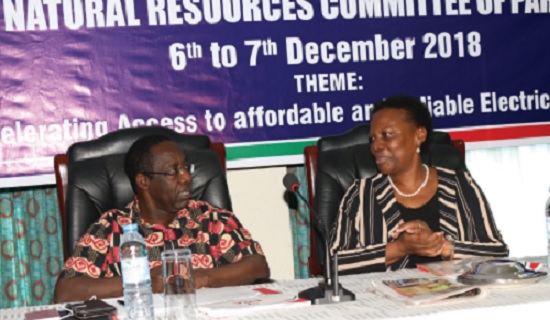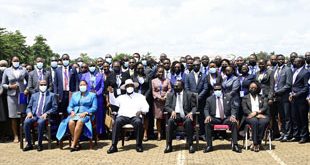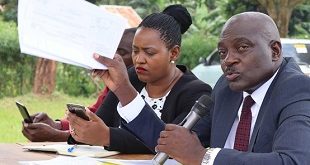
There is an opportunity for private sector players to invest in Uganda’s power sector as government moves to connect more people to the national grid.
Kampala, Uganda | JULIUS BUSINGE | Ziria Tibalwa Waako, the Chief Executive Officer at the Electricity Regulatory Authority has told The Independent on the sidelines of a two-day symposium organised by ERA at Imperial Resort Beach Hotel on Dec.5- 7, that the government is considering the possibility of investing up to US$4bn (Shs14.8tn) in the electricity transmission network and up to US$1.7bn (Shs6.3tn) in the distribution network for the period 2018-2027.
She said part of this money will be invested in the form of public-private partnerships as demand for electricity increases. At the moment, the electricity network serves 1.2million customers, up from merely 756,577 customers, three years ago.
Tibalwa also revealed that there is an opportunity in the sector for those interested in investing in solar home systems as well as mini-grids. The move is to boost electricity generation that currently stands at about 950MW.
ERA’s Communication Manager, Julius Wandera, said it is time for the local population to reap from the new initiative through supply of electricity poles and related materials in the network expansion. Themed “Accelerating Access to affordable and Reliable Electricity Supply”, the symposium was part of the ERA’s regular consultation process and information sharing on pertinent issues in the electricity supply industry with key stakeholders.
The symposium attracted around 10 Members of Parliament from the Natural Resources Committee, executives from power distributor, Umeme, Uganda Electricity Transmission Company Limited and Uganda Manufacturers Association.
Enter minister Muloni
Irene Muloni, the minister for Energy and Mineral Development,said it is time for the players in the energy sector to seize opportunities available. “We have to keep our eyes on the ball because demand for electricity is growing,” she said. “Access to electricity is at 23% meaning that 78% of the population has no access yet Vision 2040 demands that everyone must have access to modern energy.” She said engagements of such nature were important for sharing knowledge and expertise to achieve sustainable, modern, reliable and affordable electricity for the population.
Muloni told participants that power connectivity and reliability is important for meeting sustainable development goals regarding health, water, education, food, poverty reduction as well as industrialization for the country’s development agenda.
She said the government is on course to implement the President Yoweri Museveni’s directive of offering US$5 cents as tariff to boost industrial growth. Already in July this year, government reduced the tariff for the extra-large industrial consumers by 15% with the offpeak tariff reducing to US cents 5/kWh. With more power coming onboard, Muloni said that the overall tariff is expected to reduce through free power connection policy by government, waiving import duty on electric equipment, foreign currency hedging and fast-tracking of rural electrification through electrification of the 491 Sub-counties.
She also said that upgrading and extending of high voltage interconnections within the East African region for power trade purposes will come in handy. In addition, 25 industrial parks have been earmarked for development to increase on the power demand.
For instance, electrification of Namanve South sub-station, Luzira sub-station, Iganga and Mukono are ongoing. Also several transmission lines have been earmarked to support efforts of evacuation of power. These include Tororo-Opuyo-Lira 132Kv, MbararaNkenda 132Kv, Bujagali-Tororo – Lessos 220Kv, Karuma-Kawanda 400Kv, GuluAgago 132kv, Lira-Gulu-Nebbi 132kv, Masaka-Mbarara 400Kv among others.
The future
Tibalwa said more electricity plants are expected to be commissioned with 242MW and 640MW by end of 2018 and 2019 respectively. She said large hydro power plants generates 68% of the country’s electricity generation, with thermal power and co-generation contribution 11% each respectively.
Small hydropower and solar plants account for 8% and 2%, respectively. She added that 18 more projects are currently under feasibility study and that 2800MW are to be commissioned by 2024. Going forward, she said by 2040, electricity generation is expected to be 41,738MW, electricity per capita consumption 3,668kWh and national grid access over 80%.
In the short term (National Development Plan II 2019/2020), power generation is expected to be 2,500MW, national electricity access 30% and electricity per capita of 578kWh up from the current 215kWh.
 The Independent Uganda: You get the Truth we Pay the Price
The Independent Uganda: You get the Truth we Pay the Price


